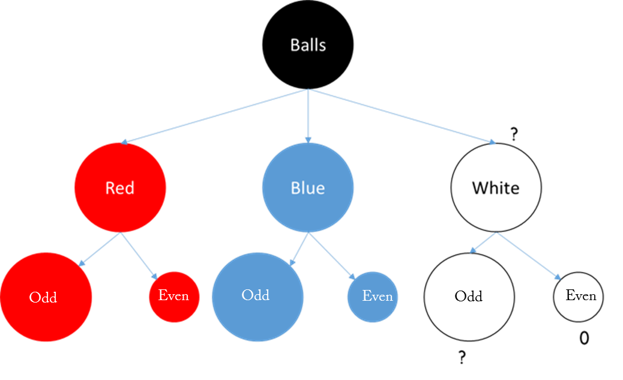Events & Promotions
|
|

GMAT Club Daily Prep
Thank you for using the timer - this advanced tool can estimate your performance and suggest more practice questions. We have subscribed you to Daily Prep Questions via email.
Customized
for You
Track
Your Progress
Practice
Pays
Not interested in getting valuable practice questions and articles delivered to your email? No problem, unsubscribe here.
- Nov 22
11:00 AM IST
-01:00 PM IST
Do RC/MSR passages scare you? e-GMAT is conducting a masterclass to help you learn – Learn effective reading strategies Tackle difficult RC & MSR with confidence Excel in timed test environment - Nov 23
11:00 AM IST
-01:00 PM IST
Attend this free GMAT Algebra Webinar and learn how to master the most challenging Inequalities and Absolute Value problems with ease. - Nov 25
10:00 AM EST
-11:00 AM EST
Prefer video-based learning? The Target Test Prep OnDemand course is a one-of-a-kind video masterclass featuring 400 hours of lecture-style teaching by Scott Woodbury-Stewart, founder of Target Test Prep and one of the most accomplished GMAT instructors.
E
Be sure to select an answer first to save it in the Error Log before revealing the correct answer (OA)!
Difficulty:
 45%
(medium)
45%
(medium)
Question Stats:
69% (02:09) correct 31%
(02:14)
wrong
31%
(02:14)
wrong  based on 4210
sessions
based on 4210
sessions
History
Date
Time
Result
Not Attempted Yet
Each of the 25 balls in a certain box is either red, blue or white and has a number from 1 to 10 painted on it. If one ball is to be selected at random from the box, what is the probability that the ball selected will either be white or have an even number painted on it?
(1) The probability that the ball will both be white and have an even number painted on it is 0
(2) The probability that the ball will be white minus the probability that the ball will have an even number painted on it is 0.2
(1) The probability that the ball will both be white and have an even number painted on it is 0
(2) The probability that the ball will be white minus the probability that the ball will have an even number painted on it is 0.2
Kudos
Bookmarks
Each of the 25 balls in a certain box is either red, blue or white and has a number from 1 to 10 painted on it. If one ball is to be selected at random from the box, what is the probability that the ball selected will either be white or have an even number painted on it?
Probability ball: white - \(P(W)\);
Probability ball: even - \(P(E)\);
Probability ball: white and even - \(P(W\&E)\).
Probability ball picked being white or even: \(P(WorE)=P(W)+P(E)-P(W\&E)\).
(1) The probability that the ball will both be white and have an even number painted on it is 0 --> \(P(W\&E)=0\) (no white ball with even number) --> \(P(WorE)=P(W)+P(E)-0\). Not sufficient
(2) The probability that the ball will be white minus the probability that the ball will have an even number painted on it is 0.2 --> \(P(W)-P(E)=0.2\), multiple values are possible for \(P(W)\) and \(P(E)\) (0.6 and 0.4 OR 0.4 and 0.2). Can not determine \(P(WorE)\).
(1)+(2) \(P(W\&E)=0\) and \(P(W)-P(E)=0.2\) --> \(P(WorE)=2P(E)+0.2\) --> multiple answers are possible, for instance: if \(P(E)=0.4\) (10 even balls) then \(P(WorE)=1\) BUT if \(P(E)=0.2\) (5 even balls) then \(P(WorE)=0.6\). Not sufficient.
Answer: E.
Hope it's clear.
Probability ball: white - \(P(W)\);
Probability ball: even - \(P(E)\);
Probability ball: white and even - \(P(W\&E)\).
Probability ball picked being white or even: \(P(WorE)=P(W)+P(E)-P(W\&E)\).
(1) The probability that the ball will both be white and have an even number painted on it is 0 --> \(P(W\&E)=0\) (no white ball with even number) --> \(P(WorE)=P(W)+P(E)-0\). Not sufficient
(2) The probability that the ball will be white minus the probability that the ball will have an even number painted on it is 0.2 --> \(P(W)-P(E)=0.2\), multiple values are possible for \(P(W)\) and \(P(E)\) (0.6 and 0.4 OR 0.4 and 0.2). Can not determine \(P(WorE)\).
(1)+(2) \(P(W\&E)=0\) and \(P(W)-P(E)=0.2\) --> \(P(WorE)=2P(E)+0.2\) --> multiple answers are possible, for instance: if \(P(E)=0.4\) (10 even balls) then \(P(WorE)=1\) BUT if \(P(E)=0.2\) (5 even balls) then \(P(WorE)=0.6\). Not sufficient.
Answer: E.
Hope it's clear.
Kudos
Bookmarks
lexis
I got E.
The question is asking for:
P(white) + P(even) - P(white&even) = ?
(1) is saying: P(white&even) = 0
Still cannot find the answer
INSUFFICIENT
(2) is saying: P(white) - P(even) = 0.2
We don't know P(white&even), INSUFFICIENT
Together, you have
P(white) - P(even) = 0.2
and want to find: P(white) + P(even)=?
cannot complete the calculation with information given.
INSUFFICIENT













